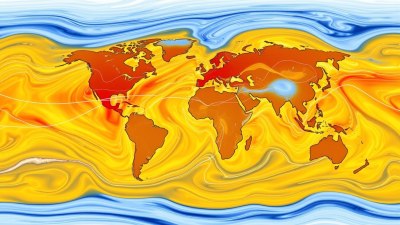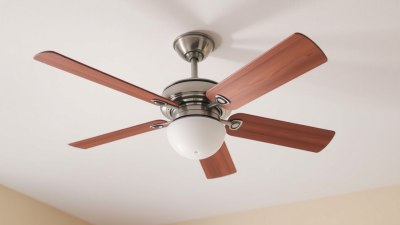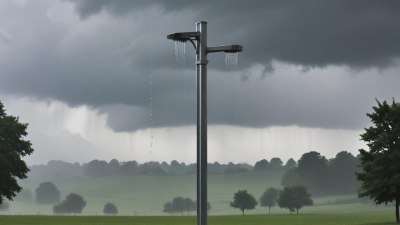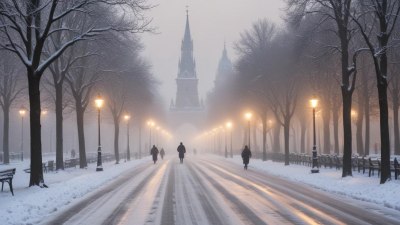How Urban Landscapes Create Their Own Heat
Explore how urban environments generate heat through materials, design, and human activities, impacting climate and health.
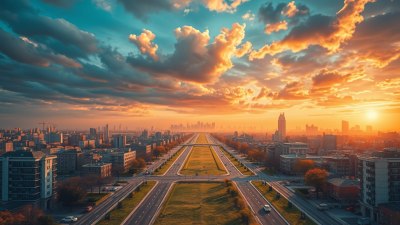
Image created with Flux Schnell
Urban landscapes are unique environments where the natural processes of heat absorption and radiation are dramatically altered. These modifications result in what is widely known as the "urban heat island" effect, where urban areas experience higher temperatures than surrounding rural regions. This phenomenon arises from various factors intrinsic to city design, human activities, and the materials used in construction. Understanding how urban landscapes create their own heat is essential for developing strategies to mitigate its negative consequences on human health, energy consumption, and climate resilience.
What Is the Urban Heat Island Effect?
The urban heat island (UHI) effect refers to the temperature difference between urban areas and their rural surroundings, often ranging from 1 to 7 degrees Celsius but sometimes even higher. This temperature gap is primarily due to the way cities modify the Earth's surface and atmosphere. Dense concentrations of buildings, asphalt, concrete, and limited vegetation alter heat absorption, retention, and emission patterns compared to natural landscapes. The result is a localized warming phenomenon that significantly influences urban weather, air quality, and energy demands.
Surface Materials and Their Role in Heat Generation
A key contributor to urban heat creation is the nature of the materials used in city infrastructure. Materials like asphalt and concrete have high thermal mass and low albedo, meaning they absorb a large amount of solar radiation during the day and slowly release it as heat throughout the night. Asphalt, for example, can reach temperatures as high as 60 degrees Celsius on a hot summer day, far exceeding natural surfaces. Concrete, while possessing a slightly higher reflectance, still retains considerable heat and disperses it over extended periods.
Unlike natural landscapes covered with vegetation, soil, or water bodies that tend to evaporate moisture, urban surfaces are largely impervious and dry. This dryness reduces evaporative cooling—a natural process where heat is dissipated through moisture evaporation. The absence of this cooling mechanism intensifies heating effects, causing urban materials to not only absorb more solar energy but also to release significant heat, especially after sunset when rural areas begin to cool rapidly.
Reduced Vegetation and Its Cooling Effects
Vegetation plays a critical role in regulating temperature through shading and evapotranspiration, a process where plants release moisture into the air, cooling the environment. Urbanization often involves clearing trees, shrubs, and grasslands to make way for buildings and roads, eliminating these natural cooling agents. The reduction in green spaces directly correlates with an increase in local temperatures.
Studies have shown that parks, gardens, and street trees can significantly reduce neighborhood temperatures by providing shade and promoting moisture release. Urban forestry initiatives worldwide aim to increase canopy cover to mitigate heat buildup. However, in many dense cities, space limitations and competing land use priorities constrain the extent of vegetation planting, limiting its cooling benefits.
Building Geometry and Urban Canyon Effects
The design and arrangement of buildings in urban areas fundamentally influence heat dynamics. Tall buildings spaced closely together create narrow streets and alleyways known as urban canyons. These canyons trap heat by limiting wind flow and exposing surfaces to repeated reflections of solar radiation.
During the day, sunlight penetrates this canyon environment, warming walls, roads, and sidewalks. Because the heat is absorbed and slowly released, especially in materials with high heat capacity, the temperature within these urban canyons remains elevated even after sunset. Wind flow is reduced, which otherwise would help cool the environment by dispersing heat. Thus, the geometry of urban design acts as a heat trap, intensifying the urban heat island effect.
Anthropogenic Heat Sources
Human activities contribute directly to urban heating through the emission of anthropogenic heat. Sources include vehicles, air conditioning units, industrial processes, lighting, and electronic devices. Combustion engines and machinery generate waste heat released into the environment. Air conditioners remove heat from inside buildings and expel it outdoors, adding to the ambient temperature.
The density of human activities correlates with the concentration of anthropogenic heat sources, leading to hotspots within cities where temperatures can be much higher than average. Traffic congestion during peak hours, dense commercial zones, and industrial districts often exhibit temperature spikes resulting from intense human energy consumption. These sources exacerbate the heat island effect beyond what is caused by natural absorption phenomena of surfaces and geometry alone.
Role of Air Pollution in Urban Heat
Urban areas typically suffer from higher levels of air pollution due to traffic, factories, and other human activities. Pollutants such as aerosols and particulate matter influence the radiation balance by absorbing and scattering sunlight. Some aerosols trap heat in the lower atmosphere, contributing to warming. Others can reflect solar energy back into space, inducing cooling effects, but the net impact in most cities tends toward warming.
Moreover, smog and pollution can reduce sky visibility and alter radiative cooling at night. This reduction of outgoing longwave radiation prevents the earth's surface from cooling effectively, locking in higher temperatures. Thus, air pollution interacts complexly with urban heat dynamics, often enhancing the strength and persistence of heat islands.
The Impact of Urban Heat on Energy Consumption
The elevated temperatures in urban environments significantly influence energy usage patterns. On hot days, there is increased reliance on air conditioning to maintain comfortable indoor conditions. This surge in cooling demand drives up electricity consumption, straining power grids and increasing greenhouse gas emissions linked to energy production.
Ironically, the energy consumed by air conditioning and other cooling technologies produces additional waste heat, which is expelled into the outdoor environment, further intensifying urban heat. This feedback loop contributes to peak load demands and increases the operational costs for utilities and consumers alike. Energy efficiency in buildings and cooling systems is a critical area of focus to combat this vicious cycle.
Effects on Human Health and Comfort
Urban heat islands have direct and indirect effects on human health. High temperatures can cause heat stress, heat exhaustion, and heatstroke, especially among vulnerable populations such as the elderly, children, and those with underlying medical conditions. Elevated nighttime temperatures limit relief, increasing health risks during heatwaves.
Furthermore, heat magnifies air pollution effects, leading to respiratory issues like asthma and chronic obstructive pulmonary disease. The combined heat and pollution burden worsen overall urban quality of life. Heat-related mortality rates rise in cities experiencing severe UHI effects, emphasizing the need for adaptive urban planning and public health interventions.
Urban Planning and Mitigation Strategies
Efforts to reduce urban heat build on modifying surface characteristics, increasing vegetation, optimizing building design, and integrating energy-efficient technologies. Strategies include the use of reflective or "cool" roofing materials that have high albedo to reflect solar radiation and reduce heat absorption. Additionally, permeable pavements can absorb less heat and allow for evaporative cooling.
Urban greening initiatives that enhance tree canopy, green roofs, and vertical gardens increase shading and evapotranspiration, significantly cooling urban microclimates. Strategic urban design can improve airflow, reducing heat retention in dense areas. Zoning regulations may encourage or mandate such features to improve city resilience.
Innovative technologies like urban water features, misting systems, and smart sensors for temperature monitoring aid in managing urban heat. Moreover, reducing anthropogenic heat emissions by promoting public transportation, electric vehicles, and clean energy can lessen the human contribution to heat generation.
Emerging Research and Future Directions
Advancements in remote sensing and geographic information systems (GIS) enable detailed mapping of urban heat patterns. High-resolution thermal imaging identifies hotspots and evaluates mitigation efforts' effectiveness. Computational fluid dynamics models simulate airflow and heat dispersion, guiding urban planners in creating cooler city environments.
Climate change adds complexity to the urban heat challenge, as rising baseline temperatures intensify heat island effects. Integrating climate projections into urban design is essential for future-proofing cities. Research into novel materials with phase-change properties or enhanced reflectivity is ongoing, aiming to develop better cooling solutions.
Community engagement and education are also vital, empowering residents to adopt practices that reduce heat impacts, such as planting trees, using shade structures, and conserving energy. Collaboration among scientists, policymakers, engineers, and the public will drive effective approaches to mitigate urban heat.
In summary, urban landscapes create their own heat through a combination of altered surface materials, reduced vegetation, building geometry, anthropogenic heat, and pollution. These factors interconnect, creating complex thermal environments that challenge city living. Addressing these issues requires integrated approaches encompassing design, technology, policy, and behavior changes. By understanding and tackling the causes of urban heat islands, cities can improve climate resilience, energy efficiency, and public health for their residents.
